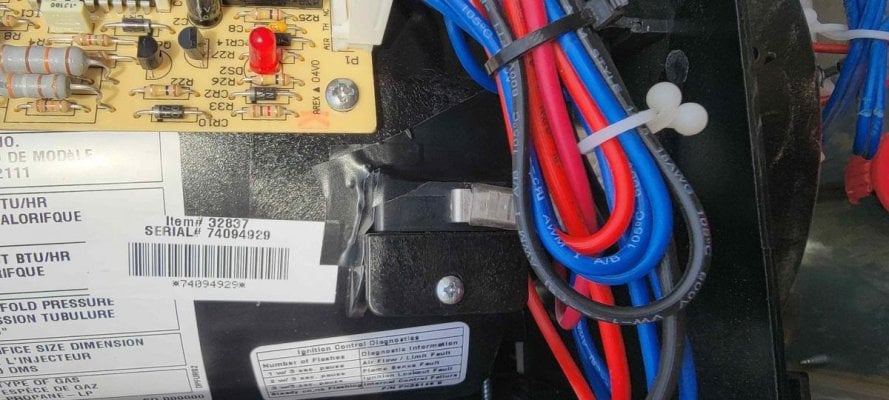@Adventurebound: Great detective work and solution.
I have a 2018 hawk with the Dometic branded version of the same furnace. I have been fortunate and not had any heater issues up to 10,100 feet. Have not camped at a higher altitude, yet.
Model number changed from AFSAD12111 to DF8A12111. I can confirm that the design changed to what you show in your pictures and continued that way through at least my production year. I have the same sail switch mounted in the same orientation as yours, there is no gasket or seal around the switch on my unit. The only difference I can see is the color of one of the components on the circuit board visible in your picture, but I assume that is simply a change in source. What I cannot confirm is if there was a dimensional change to the opening for the sail switch or if there is a flaw in how yours mounts into the blower housing, or if you have simply had bad luck with a couple sail switches.
The A in the model number indicates the low amperage blower motor used to make these units more power efficient. I would assume, carefull there, that the lowered amperage means lower airflow and I guess that these units are operating right at the limit of air flow/heat exchange for a 12,000 BTU furnace. If that is correct, then the smallest variation in airflow could easily cause a fault condition. This would seem to be confirmed by your fix which is repairing a very small air leak at most, as well as the “remove the cover” fix which effectively removes the flow restriction of a couple inches of 5 inch flex duct, again a minimal restriction. I think that Atwood designed as low an amperage a furnace as they could build around an existing burner unit, and it is at the edge of the design envelope of the burner. It probably would have been better to design a smaller, say 8-10k burner, but that would have cost a lot for a product that is probably not a huge part of their product line. Notice from the service manual that the AFS12 model furnace minimum ducting requirement, 24 sq in, is significantly higher than that of the AFSA12 model at 15 sq in, implying significantly greater airflow requirements.
Having lived with this furnace for three years now, I think it is ok and does the job. I also think that a redesign on the part of FWC to allow for a couple ducts to better distribute the heat would be worth exploring, and might allow for the use of a less finicky unit. I also feel that a smaller furnace would probably be a good choice given the small space that is being heated.

